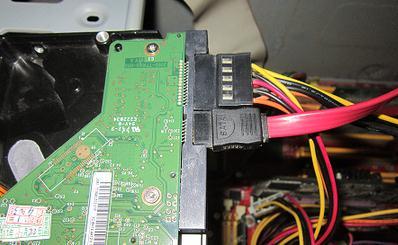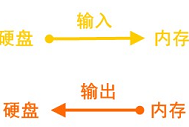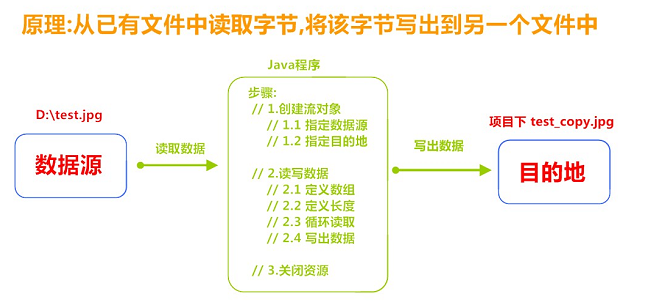IO流
字节流 字符流
IO流
字节流
字符流
异常处理
IO概述
1.1 什么是IO
生活中,你肯定经历过这样的场景。当你编辑一个文本文件,忘记了 ctrl+s ,可能文件就白白编辑了。当你电脑上插入一个U盘,可以把一个视频,拷贝到你的电脑硬盘里。那么数据都是在哪些设备上的呢?键盘、内存、硬盘、外接设备等等。
我们把这种数据的传输,可以看做是一种数据的流动,按照流动的方向,以内存为基准,分为 输入input 和 输出output ,即流向内存是输入流,流出内存的输出流。
Java中I/O操作主要是指使用 java.io 包下的内容,进行输入、输出操作。输入也叫做读取数据,输出也叫做作写出
1.2 IO的分类
根据数据的流向分为:输入流和输出流。
输入流 :把数据从 其他设备 上读取到 内存 中的流。
输出流 :把数据从 内存 中写出到 其他设备 上的流。
格局数据的类型分为:字节流和字符流。
字节流 :以字节为单位,读写数据的流。
字符流 :以字符为单位,读写数据的流。
1.3 IO的流向说明图解


1.4 顶级父类们
| 输入流 | 输出流 | |
| 字节流 |
字节输入流 InputStream |
字节输入流 OutputStream |
| 字符流 | Reader | Writer |
字节流
2.1 一切皆为字节
一切文件数据(文本、图片、视频等)在存储时,都是以二进制数字的形式保存,都一个一个的字节,那么传输时一
样如此。所以,字节流可以传输任意文件数据。在操作流的时候,我们要时刻明确,无论使用什么样的流对象,底
层传输的始终为二进制数据。
2.2 字节输出流【OutputStream】
java.io.OutputStream 抽象类是表示字节输出流的所有类的超类,将指定的字节信息写出到目的地。它定义了字
节输出流的基本共性功能方法。
public void close() :关闭此输出流并释放与此流相关联的任何系统资源。
public void flush() :刷新此输出流并强制任何缓冲的输出字节被写出。
public void write(byte[] b) :将 b.length字节从指定的字节数组写入此输出流。
public void write(byte[] b, int off, int len) :从指定的字节数组写入 len字节,从偏移量 off开始输
出到此输出流。
public abstract void write(int b) :将指定的字节输出流。
close方法,当完成流的操作时,必须调用此方法,释放系统资源。
2.3 FileOutputStream类
OutputStream 有很多子类,我们从最简单的一个子类开始。
java.io.FileOutputStream 类是文件输出流,用于将数据写出到文件。
构造方法
public FileOutputStream(File file) :创建文件输出流以写入由指定的 File对象表示的文件。
public FileOutputStream(String name) : 创建文件输出流以指定的名称写入文件。
当你创建一个流对象时,必须传入一个文件路径。该路径下,如果没有这个文件,会创建该文件。如果有这个文
件,会清空这个文件的数据。
构造举例,代码如下:
public class FileOutputStreamConstructor throws IOException {
public static void main(String[] args) {
// 使用File对象创建流对象
File file = new File("a.txt");
FileOutputStream fos = new FileOutputStream(file);
// 使用文件名称创建流对象
FileOutputStream fos = new FileOutputStream("b.txt");
}
}
写出字节数据
1. 写出字节: write(int b) 方法,每次可以写出一个字节数据,代码使用演示:
public class FOSWrite {
public static void main(String[] args) throws IOException {
// 使用文件名称创建流对象
FileOutputStream fos = new FileOutputStream("fos.txt");
// 写出数据
fos.write(97); // 写出第1个字节
fos.write(98); // 写出第2个字节
fos.write(99); // 写出第3个字节
// 关闭资源 fos.close();
}
}
输出结果:
abc
1. 虽然参数为int类型四个字节,但是只会保留一个字节的信息写出。
2. 流操作完毕后,必须释放系统资源,调用close方法,千万记得。
2. 写出字节数组: write(byte[] b) ,每次可以写出数组中的数据,代码使用演示:
public class FOSWrite {
public static void main(String[] args) throws IOException {
// 使用文件名称创建流对象
FileOutputStream fos = new FileOutputStream("fos.txt");
// 字符串转换为字节数组
byte[] b = "程序员".getBytes();
// 写出字节数组数据 fos.write(b);
// 关闭资源
fos.close();
}
}
输出结果:
程序员
3. 写出指定长度字节数组: write(byte[] b, int off, int len) ,每次写出从off索引开始,len个字节,代码使用演示:
public class FOSWrite {
public static void main(String[] args) throws IOException {
// 使用文件名称创建流对象
FileOutputStream fos = new FileOutputStream("fos.txt");
// 字符串转换为字节数组
byte[] b = "abcde".getBytes();
// 写出从索引2开始,2个字节。索引2是c,两个字节,也就是cd。
fos.write(b,2,2);
// 关闭资源
fos.close();
}
}
输出结果:
cd
数据追加续写
经过以上的演示,每次程序运行,创建输出流对象,都会清空目标文件中的数据。如何保留目标文件中数据,还能继续添加新数据呢?
public FileOutputStream(File file, boolean append) : 创建文件输出流以写入由指定的 File对象表示的文件。
public FileOutputStream(String name, boolean append) : 创建文件输出流以指定的名称写入文件。
这两个构造方法,参数中都需要传入一个boolean类型的值, true 表示追加数据, false 表示清空原有数据。
这样创建的输出流对象,就可以指定是否追加续写了,代码使用演示:
public class FOSWrite {
public static void main(String[] args) throws IOException {
// 使用文件名称创建流对象
FileOutputStream fos = new FileOutputStream("fos.txt",true);
// 字符串转换为字节数组
byte[] b = "abcde".getBytes();
// 写出从索引2开始,2个字节。索引2是c,两个字节,也就是cd。 fos.write(b);
// 关闭资源
fos.close();
}
}
文件操作前:cd
文件操作后:cdabcde
写出换行
Windows系统里,换行符号是 \r\n 。把以指定是否追加续写了,代码使用演示:
public class FOSWrite {
public static void main(String[] args) throws IOException {
// 使用文件名称创建流对象
FileOutputStream fos = new FileOutputStream("fos.txt");
// 定义字节数组
byte[] words = {97,98,99,100,101};
// 遍历数组
for (int i = 0; i < words.length; i++) {
// 写出一个字节
fos.write(words[i]);
// 写出一个换行, 换行符号转成数组写出 fos.write("\r\n".getBytes());
}
// 关闭资源 fos.close();
}
}
输出结果:
a
b
c
d
e
回车符 \r 和换行符 \n :
回车符:回到一行的开头(return)。
换行符:另起一行(newline)。
系统中的换行:
Windows系统里,每行结尾是 回车+换行 ,即 \r\n ;
Unix系统里,每行结尾只有 换行 ,即 \n ;
Mac系统里,每行结尾是 回车 ,即 \r 。从 Mac OS X开始与Linux统一。
字节输入流【InputStream】
java.io.InputStream 抽象类是表示字节输入流的所有类的超类,可以读取字节信息到内存中。它定义了字节输入流的基本共性功能方法。
public void close() :关闭此输入流并释放与此流相关联的任何系统资源。
public abstract int read() : 从输入流读取数据的下一个字节。
public int read(byte[] b) : 从输入流中读取一些字节数,并将它们存储到字节数组 b中 。
close方法,当完成流的操作时,必须调用此方法,释放系统资源。
FileInputStream类
java.io.FileInputStream 类是文件输入流,从文件中读取字节。
构造方法
FileInputStream(File file) : 通过打开与实际文件的连接来创建一个 FileInputStream ,该文件由文件系统中的 File对象 file命名。
FileInputStream(String name) : 通过打开与实际文件的连接来创建一个 FileInputStream ,该文件由文件系统中的路径名 name命名。
当你创建一个流对象时,必须传入一个文件路径。该路径下,如果没有该文件,会抛出 FileNotFoundException 。
构造举例,代码如下:
public class FileInputStreamConstructor throws IOException{
public static void main(String[] args) {
// 使用File对象创建流对象
File file = new File("a.txt");
FileInputStream fos = new FileInputStream(file);
// 使用文件名称创建流对象
FileInputStream fos = new FileInputStream("b.txt");
}
}
读取字节数据
1. 读取字节: read 方法,每次可以读取一个字节的数据,提升为int类型,读取到文件末尾,返回 -1 ,代码使用演示:
public class FISRead {
public static void main(String[] args) throws IOException{
// 使用文件名称创建流对象
FileInputStream fis = new FileInputStream("read.txt");
// 读取数据,返回一个字节
int read = fis.read();
System.out.println((char) read);
read = fis.read();
System.out.println((char) read);
read = fis.read();
System.out.println((char) read);
read = fis.read();
System.out.println((char) read);
read = fis.read();
System.out.println((char) read);
// 读取到末尾,返回‐1
read = fis.read();
System.out.println( read);
// 关闭资源 fis.close();
}
}
输出结果:
a
b
c
d
e
‐1
循环改进读取方式,代码使用演示:
public class FISRead {
public static void main(String[] args) throws IOException{
// 使用文件名称创建流对象
FileInputStream fis = new FileInputStream("read.txt");
// 定义变量,保存数据 int b ;
// 循环读取
while ((b = fis.read())!=‐1) {
System.out.println((char)b);
}
// 关闭资源 fis.close();
}
}
输出结果:
a
b
c
d
e
1. 虽然读取了一个字节,但是会自动提升为int类型。
2. 流操作完毕后,必须释放系统资源,调用close方法,千万记得。
3. 使用字节数组读取: read(byte[] b) ,每次读取b的长度个字节到数组中,返回读取到的有效字节个数,读取到末尾时,返回 -1 ,代码使用演示:
public class FISRead {
public static void main(String[] args) throws IOException{
// 使用文件名称创建流对象.
FileInputStream fis = new FileInputStream("read.txt"); // 文件中为abcde
// 定义变量,作为有效个数
int len ;
// 定义字节数组,作为装字节数据的容器
byte[] b = new byte[2];
// 循环读取
while (( len= fis.read(b))!=‐1) {
// 每次读取后,把数组变成字符串打印
System.out.println(new String(b));
}
// 关闭资源 fis.close();
}
}
输出结果:
ab
cd
ed
错误数据 d ,是由于最后一次读取时,只读取一个字节 e ,数组中,上次读取的数据没有被完全替换,所以要通过 len ,获取有效的字节,代码使用演示: public class FISRead {
public static void main(String[] args) throws IOException{
// 使用文件名称创建流对象.
FileInputStream fis = new FileInputStream("read.txt"); // 文件中为abcde
// 定义变量,作为有效个数
int len ;
// 定义字节数组,作为装字节数据的容器
byte[] b = new byte[2];
// 循环读取
while (( len= fis.read(b))!=‐1) {
// 每次读取后,把数组的有效字节部分,变成字符串打印
System.out.println(new String(b,0,len));// len 每次读取的有效字节个数
}
// 关闭资源
fis.close();
}
}
输出结果:
ab
cd
e
使用数组读取,每次读取多个字节,减少了系统间的IO操作次数,从而提高了读写的效率,建议开发中使用。
字节流:图片复制
复制原理图解
案例实现
复制图片文件,代码使用演示:
public class Copy {
public static void main(String[] args) throws IOException {
// 1.创建流对象
// 1.1 指定数据源
FileInputStream fis = new FileInputStream("D:\\test.jpg");
// 1.2 指定目的地
FileOutputStream fos = new FileOutputStream("test_copy.jpg");
// 2.读写数据
// 2.1 定义数组
byte[] b = new byte[1024];
// 2.2 定义长度
int len;
// 2.3 循环读取
while ((len = fis.read(b))!=‐1) {
// 2.4 写出数据
fos.write(b, 0 , len);
}
// 3.关闭资源
fos.close();
fis.close();
}
}
流的关闭原则:先开后关,后开先关。
字符流
当使用字节流读取文本文件时,可能会有一个小问题。就是遇到中文字符时,可能不会显示完整的字符,那是因为一个中文字符可能占用多个字节存储。所以Java提供一些字符流类,以字符为单位读写数据,专门用于处理文本文件。
字符输入流【Reader】
java.io.Reader 抽象类是表示用于读取字符流的所有类的超类,可以读取字节信息到内存中。它定义了字节输入流的基本共性功能方法。
public void close() :关闭此流并释放与此流相关联的任何系统资源。
public int read() : 从输入流读取一个字符。
public int read(char[] cbuf) : 从输入流中读取一些字符,并将它们存储到字符数组 cbuf中 。
FileReader类
java.io.FileReader 类是读取字符文件的便利类。构造时使用系统默认的字符编码和默认字节缓冲区。
1. 字符编码:字节与字符的对应规则。Windows系统的中文编码默认是GBK编码表。
2. 字节缓冲区:一个字节数组,用来临时存储字节数据。
构造方法
FileReader(File file) : 创建一个新的 FileReader ,给定要读取的File对象。
FileReader(String fileName) : 创建一个新的 FileReader ,给定要读取的文件的名称。
当你创建一个流对象时,必须传入一个文件路径。类似于FileInputStream 。
构造举例,代码如下:
public class FileReaderConstructor throws IOException{
public static void main(String[] args) {
// 使用File对象创建流对象
File file = new File("a.txt");
FileReader fr = new FileReader(file);
// 使用文件名称创建流对象
FileReader fr = new FileReader("b.txt");
}
}
读取字符数据
1. 读取字符: read 方法,每次可以读取一个字符的数据,提升为int类型,读取到文件末尾,返回 -1 ,循环读取,代码使用演示:
public class FRRead {
public static void main(String[] args) throws IOException {
// 使用文件名称创建流对象
FileReader fr = new FileReader("read.txt");
// 定义变量,保存数据 int b ;
// 循环读取
while ((b = fr.read())!=‐1) {
System.out.println((char)b);
}
// 关闭资源 fr.close();
}
}
输出结果:
程
序
员
虽然读取了一个字符,但是会自动提升为int类型。
2. 使用字符数组读取: read(char[] cbuf) ,每次读取b的长度个字符到数组中,返回读取到的有效字符个数,读取到末尾时,返回 -1 ,代码使用:
public class FRRead {
public static void main(String[] args) throws IOException {
// 使用文件名称创建流对象
FileReader fr = new FileReader("read.txt");
// 定义变量,保存有效字符个数 int len ;
// 定义字符数组,作为装字符数据的容器 char[] cbuf = new char[2];
// 循环读取
while ((len = fr.read(cbuf))!=‐1) {
System.out.println(new String(cbuf));
}
// 关闭资源 fr.close();
}
}
输出结果:
程序
员序
获取有效的字符改进,代码使用演示:
public class FISRead {
public static void main(String[] args) throws IOException {
// 使用文件名称创建流对象
FileReader fr = new FileReader("read.txt");
// 定义变量,保存有效字符个数 int len ;
// 定义字符数组,作为装字符数据的容器 char[] cbuf = new char[2];
// 循环读取
while ((len = fr.read(cbuf))!=‐1) {
System.out.println(new String(cbuf,0,len));
}
// 关闭资源 fr.close();
}
}
输出结果:
程序
员
字符输出流【Writer】
java.io.Writer 抽象类是表示用于写出字符流的所有类的超类,将指定的字符信息写出到目的地。它定义了字节
输出流的基本共性功能方法。
public abstract void close() :关闭此输出流并释放与此流相关联的任何系统资源。
public abstract void flush() :刷新此输出流并强制任何缓冲的输出字符被写出。
public void write(int b) :写出一个字符。
public void write(char[] cbuf) :将 b.length字符从指定的字符数组写出此输出流。
public abstract void write(char[] b, int off, int len) :从指定的字符数组写出 len字符,从偏移量
off开始输出到此输出流。
public void write(String str) :写出一个字符串。
FileWriter类
java.io.FileWriter 类是写出字符到文件的便利类。构造时使用系统默认的字符编码和默认字节缓冲区。
构造方法
FileWriter(File file) : 创建一个新的 FileWriter,给定要读取的File对象。
FileWriter(String fileName) : 创建一个新的 FileWriter,给定要读取的文件的名称。
当你创建一个流对象时,必须传入一个文件路径,类似于FileOutputStream。
构造举例,代码如下:
public class FileWriterConstructor {
public static void main(String[] args) throws IOException {
// 使用File对象创建流对象
File file = new File("a.txt");
FileWriter fw = new FileWriter(file);
// 使用文件名称创建流对象
FileWriter fw = new FileWriter("b.txt");
}
}
基本写出数据
写出字符: write(int b) 方法,每次可以写出一个字符数据,代码使用演示:
public class FWWrite {
public static void main(String[] args) throws IOException {
// 使用文件名称创建流对象
FileWriter fw = new FileWriter("fw.txt");
// 写出数据
fw.write(97); // 写出第1个字符
fw.write('b'); // 写出第2个字符
fw.write('C'); // 写出第3个字符
fw.write(30000); // 写出第4个字符,中文编码表中30000对应一个汉字。
/*
【注意】关闭资源时,与FileOutputStream不同。
如果不关闭,数据只是保存到缓冲区,并未保存到文件。
*/
// fw.close();
}
}
输出结果:
abC田
1. 虽然参数为int类型四个字节,但是只会保留一个字符的信息写出。
2. 未调用close方法,数据只是保存到了缓冲区,并未写出到文件中。
关闭和刷新
因为内置缓冲区的原因,如果不关闭输出流,无法写出字符到文件中。但是关闭的流对象,是无法继续写出数据
的。如果我们既想写出数据,又想继续使用流,就需要 flush 方法了。
flush :刷新缓冲区,流对象可以继续使用。
close :关闭流,释放系统资源。关闭前会刷新缓冲区。
代码使用演示:
public class FWWrite {
public static void main(String[] args) throws IOException {
// 使用文件名称创建流对象
FileWriter fw = new FileWriter("fw.txt");
// 写出数据,通过flush
fw.write('刷'); // 写出第1个字符
fw.flush();
fw.write('新'); // 继续写出第2个字符,写出成功
fw.flush();
// 写出数据,通过close
fw.write('关'); // 写出第1个字符
fw.close();
fw.write('闭'); // 继续写出第2个字符,【报错】java.io.IOException: Stream closed
fw.close();
}
}
即便是flush方法写出了数据,操作的最后还是要调用close方法,释放系统资源。
写出其他数据
1. 写出字符数组 : write(char[] cbuf) 和 write(char[] cbuf, int off, int len) ,每次可以写出字符数组中的数据,用法类似FileOutputStream,代码使:
public class FWWrite {
public static void main(String[] args) throws IOException {
// 使用文件名称创建流对象
FileWriter fw = new FileWriter("fw.txt");
// 字符串转换为字节数组
char[] chars = "程序员".toCharArray();
// 写出字符数组
fw.write(chars); // 程序员
// 写出从索引0开始,2个字节。索引0是'程',两个字节,也就是'程序'。
fw.write(b,0,1); // 程序员
// 关闭资源 fos.close();
}
}
2. 写出字符串: write(String str) 和 write(String str, int off, int len) ,每次可以写出字符串中的
数据,更为方便,代码使用演示:
public class FWWrite {
public static void main(String[] args) throws IOException {
// 使用文件名称创建流对象
FileWriter fw = new FileWriter("fw.txt");
// 字符串
String msg = "程序员";
// 写出字符数组
fw.write(msg); //程序员
// 写出从索引0开始,2个字节。索引0是'程',两个字节,也就是'程序'。
fw.write(msg0,1); // 程序
// 关闭资源
fos.close();
}
}
3. 续写和换行:操作类似于FileOutputStream。
public class FWWrite {
public static void main(String[] args) throws IOException {
// 使用文件名称创建流对象,可以续写数据
FileWriter fw = new FileWriter("fw.txt",true);
// 写出字符串
fw.write("程");
// 写出换行
fw.write("\r\n");
// 写出字符串
fw.write("序员");
// 关闭资源 fw.close();
}
}
输出结果:
程
序员
字符流,只能操作文本文件,不能操作图片,视频等非文本文件。
IO异常的处理
JDK7前处理之前的入门练习,我们一直把异常抛出,而实际开发中并不能这样处理,建议使用 try...catch...finally 代码块,处理异常部分,代码使用:
public class HandleException1 {
public static void main(String[] args) {
// 声明变量
FileWriter fw = null; try {
//创建流对象
fw = new FileWriter("fw.txt");
// 写出数据
fw.write("程序员"); //程序员
} catch (IOException e) { e.printStackTrace();
} finally {
try {
if (fw != null) {
fw.close();
}
} catch (IOException e) { e.printStackTrace();
}
}
}
}
JDK7的处理
还可以使用JDK7优化后的 try-with-resource 语句,该语句确保了每个资源在语句结束时关闭。所谓的资源
(resource)是指在程序完成后,必须关闭的对象。
格式:
try (创建流对象语句,如果多个,使用';'隔开) {
// 读写数据
} catch (IOException e) { e.printStackTrace();
}
代码使用演示:
public class HandleException2 {
public static void main(String[] args) {
// 创建流对象
try ( FileWriter fw = new FileWriter("fw.txt"); ) {
// 写出数据
fw.write("程序员"); //程序员
} catch (IOException e) { e.printStackTrace();
}
}
}
JDK9的改进
JDK9中 try-with-resource 的改进,对于引入对象的方式,支持的更加简洁。被引入的对象,同样可以自动关闭,
无需手动close,我们来了解一下格式。
改进前格式:
// 被final修饰的对象
final Resource resource1 = new Resource("resource1");
// 普通对象
Resource resource2 = new Resource("resource2");
// 引入方式:创建新的变量保存 try (Resource r1 = resource1;
Resource r2 = resource2) {
// 使用对象
}
改进后格式:
// 被final修饰的对象
final Resource resource1 = new Resource("resource1");
// 普通对象
Resource resource2 = new Resource("resource2");
// 引入方式:直接引入 try (resource1;
resource2) {
// 使用对象
}
改进后,代码使用演示:
public class TryDemo {
public static void main(String[] args) throws IOException {
// 创建流对象
final FileReader fr = new FileReader("in.txt");
FileWriter fw = new FileWriter("out.txt");
// 引入到try中 try (fr;fw ) {
// 定义变量 int b;
// 读取数据
while ((b = fr.read())!=‐1) {
// 写出数据 fw.write(b);
}
} catch (IOException e) {
e.printStackTrace();
}
}
}



